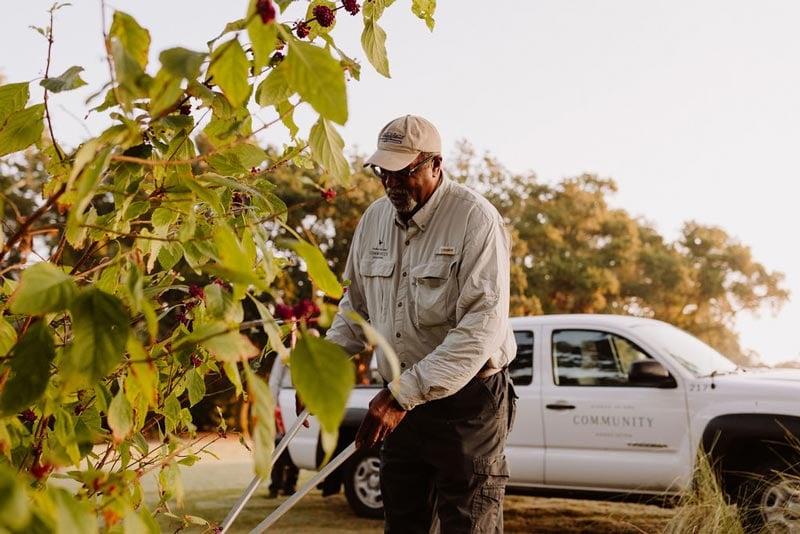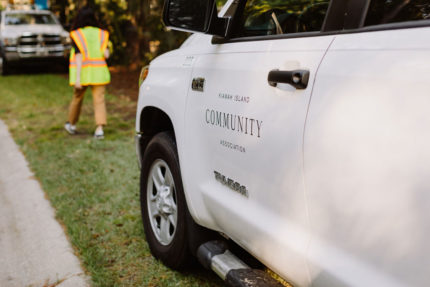Sep
28
2020
From The Blog
How Individuals Can Reduce Flooding Risk on Their Property
KICA’s resilience specialist Lucas Hernandez wears many different hats at the association, chairing the task force developing an adaptive management plan for KICA and the town, continuously updating his model of the various watersheds on the island, as well as considering new ways the association can gather and use data to manage water in a more beneficial way.
According to Lucas, there are generally three main ways of handling storm water: storage (for example, in a rain barrel), diversion (pipes), and infiltration(pervious concrete). Let’s take a look at how each of these ways handles water differently.
STORAGE
Water storage/collection simply means rainwater is collected and stored for a brief or extended period of time instead of being allowed to flow naturally through the watershed. There are a few different ways to do this, including rain barrels, cisterns, retention ponds and more. Collection is a great way to make sustainable changes at your home. Rainwater collection in barrels or cisterns can be used to water just about anything around the home, including the lawn and seasonal flower beds. Irrigation creates a significant cost, particularly in drought years. Having one of these systems can reduce the amount of water needed and the cost substantially.
Retention areas are permanent infrastructure like ponds that hold water. These ponds can be a single body of water or connected to a larger drainage system, like Kiawah’s ponds are. Detention areas allow for temporary holding of water. These areas fill up during a storm event and allow water to drain slowly without flooding. Rain gardens area great example of a detention area that can be both functional and beautiful. Lucas notes that the functionality of detention areas are “largely dependent on the elevations on and around their property and the soil type that they have. If someone creates a rain garden in the wrong area, they will have a big mosquito pond.”
DIVERSION
Water diversion is used to move water from an area where it is detrimental to an area where it is less problematic. This category includes gutters, drains, berms, swales and more. For example, Project 5in KICA’s member-approved water management projects (get a complete look at kica.us/flood) includes a weir, a low barrier to reduce backflow into drains from minor tides, that will reduce flooding in Indigo Park and on Governors Drive by diverting tidal flow back into the marsh.
Wave attenuating structures divert water in a different way, creating a buffer between properties and the natural flow of water from tidal marshes and ponds. Marsh grasses naturally perform the same action, one of the key reasons a healthy marsh is a benefit to Kiawah. Man-made structures include two that have been popular on the island, oyster reefs and Envirolok. Both rely on the growth of plants and animals to protect areas from water flow and stabilize eroding soil. These systems are often mutually beneficial, creating important habitat and
reducing property risks.
INFILTRATION
Water infiltration is just what it sounds like —allowing water to naturally absorb into the soil. Development complicates water infiltration, compacting soil, adding asphalt, concrete and roof structures over previously permeable soil. However, adding features that promote water infiltration to your property can reduce these issues, especially in terms of storm water runoff. Porous versions of impervious materials are gaining popularity, such as porous asphalt pavement and pervious concrete. These materials can be used on their own or combined with others, such as interlocking pavers that allow water to penetrate into soil more quickly. The photo to the left is the Kiawah driveway of Denise Graybill-Donohoe, which uses these materials in an esthetically-pleasing way.
Rain gardens are a great way to promote water infiltration as well. These temporary detention areas use plants with deep roots that pull water down into the soil. Often filled with native plants, rain gardens are also great for wildlife and pollinators and help to filter pollutants before the water reaches marshes and ponds.
Water management solutions like these should be tailored to fit your property, and can work alone or combine multiple approaches. Keep in mind that on Kiawah, you will likely need approval from the ARB and encroachment permits before you proceed with a new water management solution.
For links to recommended resources, visit kica.us/flood.

